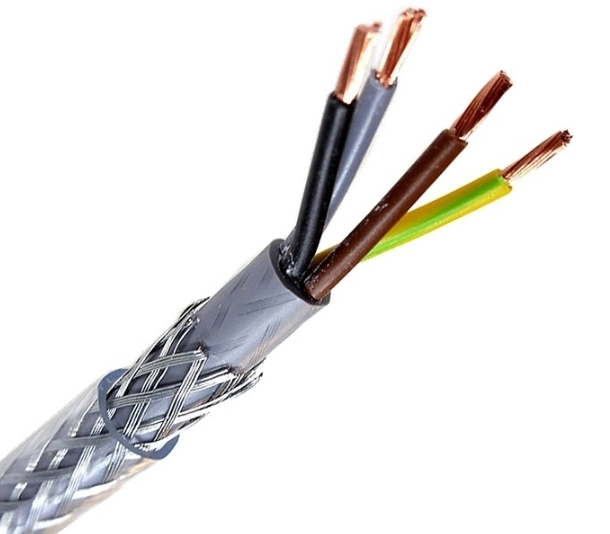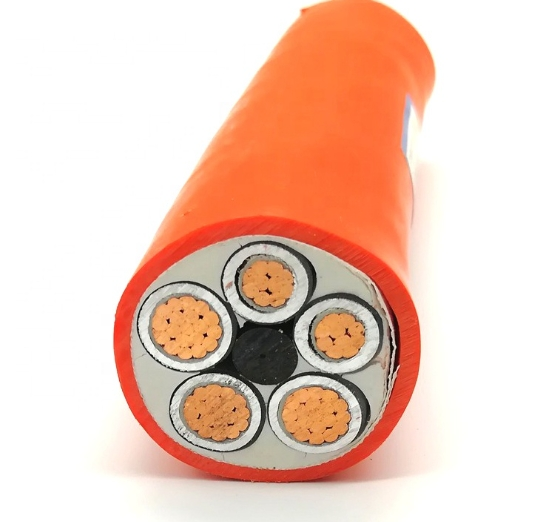Within the electrical engineering industry, the CE mark is a symbol of safety and compliance and is proof that a product meets the highest European Union standards. CE cables are highly valued as an example of compliance with the EU’s stringent health, safety and environmental directives. This article aims to provide an in-depth analysis of CE cables, encompassing CE cable definition, CE marking significance, the certification process, and considerations for procurement, and to highlight the importance of complying with safety, quality, and market access regulations.
What is CE Cable?
CE cables are not a specific cable type but cables carrying the CE label. The CE mark on the cable indicates that it complies with the safety, health, and environmental protection essential requirements set out in the EU directives, mainly the Construction Products Regulation (CPR) and the Low Voltage Directive (LVD). Common CE cable types are H05VV-F, H07RN-F cable, control cable, and electrical cable.

Having gained some understanding of CE cables, let’s now examine what CE marking is.
CE marking meaning.
The CE mark is a uniform mark of conformity for products sold within the European Economic Area (EEA), and ‘CE’ is the abbreviation of French, which in English means “European Community. In essence, CE certification is the manufacturer’s legal declaration that its product conforms with safety, health, environmental protection, or other requirements outlined in the Council of the European Union directive, and that it is responsible for products.
The CE Mark is the passport for electrical equipment to enter Europe, which not only eases market access but boosts consumer confidence, as consumers tend to trust products that have been tested by recognized organizations. It also significantly reduces legal risks for manufacturers by preventing issues like fines or product recalls. By promoting safety and environmental mindfulness in product design and development, the CE Mark contributes to greater product safety and lower emissions.
In, summary, CE certification facilitates the circulation of goods between member states and provides a competitive advantage for manufacturers seeking to thrive in the European market. Well, since the CE mark is so important, how to get it?
How to get CE certified?
Unlike other certification marks like CCC, Underwriters Laboratories (UL), or Canadian Standards Association(CCA), CE certificate is not necessarily granted by specific regulatory body, instead, manufacturers can self-certify their products as compliant with relevant EU directives and standards, as described in the following steps:
Step 1. Identify Applicable EU Directives: Manufacturers should first examine the 24 CE Directives to determine which apply to your products. Key directives for cable products include the Low Voltage Directive, RoHS, EMC, and WEEE.
Step 2. Harmonized Standards: Understand the essential requirements of the identified directives applicable to your product. The details of the essential requirements are usually consistent with the European Harmonised Standards (EN) that provide the technical specifications.
Step 3. Collect Technical Data: Gather all necessary information and data from the supply chain, including materials, design, manufacturing processes, and supplier information in preparation for compiling comprehensive technical documentation.
Step 4. Perform Conformity Assessment: involve product electrical safety, performance, and environmental impact assessment to ensure that it complies with essential requirements. Manufacturers with the necessary expertise may perform these tests internally, whereas those lacking such capabilities can engage certified external laboratories.
Step 5. Compile Technical Documentation: Create a comprehensive technical dossier that encompasses design specifications, manufacturing details, test results, and risk assessment. This documentation should be maintained for a decade after the last product was sold.
Step 6. Draft an EU Declaration of Conformity (DoC): Doc should detail the product, directives that the product complies with, and the source of the test results, and should be signed by the responsible person. Specific products like electrical equipment, medical devices, and machinery may additionally require the Notified Body’s Certificate of Conformity.
Step 7. Affix CE Mark: The product can be labeled with the CE marking after completing all the above processes; the affixed CE marking should be visible, legible, and indelible.
In summary, achieving CE certified is a demanding progress requiring an in-depth understanding of EU requirements. The advantages of CE marking in terms of market access and consumer trust make it a necessary investment for manufacturers seeking to participate in the European market.
Finished talking about how to get CE certification, let’s take a look at the standards and compliance of CE cable.
CE Cable Standards and Compliance.
Whether a product needs the CE marking depends on the requirements of the applicable EU directives. If a cable is not covered by any EU directives that require CE marking, it can be sold within the EEA without this mark. For cable products that fall under the category requiring CE marking, the specific standards are as follows:
- The CE marking for common wire and cable products is applicable to the final product rather than to individual components. For example, wire and cable products used in machines and appliances don’t usually require CE marking, instead, the necessity for CE marking is determined based on whether the complete machine or equipment adheres to the relevant EU directives, such as the Machinery Directive or the Low Voltage Directive.
- Cable assemblies are types of wire and cable products, necessitate the affixing of a CE Mark as they constitute complete products and are within the scope of Low Voltage Directive.
- Certain specific cable types, particularly those permanently installed in construction, (e.g. buildings, roads, and bridges) are subject to CE marking requirements governed by EN 50575 and comply with Construction Products Regulation (CPR), which focuses on the cables’ fire performance. Common types are power cable, communication cable, data cables, and fiber cables that form fixed parts of the infrastructure.
By following the above standards, compliance is ensured for cables requiring CE marking within the European Economic Area. In addition, where a problem is detected after the cable has been placed on the market, it is the manufacturer’s responsibility to take corrective action, like product recalls. Next, let’s look at some practical purchasing issues.
Factors to consider when Purchasing CE cables.
When purchasing CE cables, several factors need to be considered to ensure that the product meets your specific needs and complies with relevant regulations:
- Inspect the CE Symbol: The CE marking should be visible, clear, and permanently affixed to the product or its data plate at a height of not less than 5 mm, except that if the product is too small to be affixed, it must be affixed to the packaging and accompanying documentation, but electronic labeling is not permitted. In addition, the letter “CE” is made up of certain proportions, and counterfeit trademarks may look superficially correct but do not meet the official standards in terms of font, size, and spacing, be careful to identify them.
- Check for Documentation: Genuine CE cables are usually accompanied by documentation such as a Declaration of Conformity (DoC) and a Technical Data Sheet, a copy of which is usually attached to the product by the manufacturer or available online.
- Examine Cable’s Quality: Visual inspection of the cable, genuine CE cables typically have a high-quality finish, insulation of uniform thickness, and correct labeling, and the insulation is not brittle or easily deformed. If available, the cable should be tested for electrical, mechanical, and thermal properties. Tip, be cautious if the cable looks roughly made.
- Look for Testing and Quality Marks: Apart from the CE mark, cables may have additional quality marks or certifications from recognized testing organizations, such as the VDE mark, IEC standard, British Standard (BS) mark or UL certification.
- Purchase from Reputable Sources: Buy cables from known, reputable manufacturers like ZW Cable. Avoid purchasing from unverified online platforms or third-party vendors without a proven track record.
- Be Wary of Unbelievably Low Prices: If the price of a CE-marked cable seems too good to be true, it might indicate a counterfeit. Genuine CE cables typically command a market-consistent price due to the higher standards of manufacturing and testing involved.

By thoroughly evaluating the above aspects, you can make informed decisions that lead to acquiring safe, reliable, and high-quality CE cables, ensuring both regulatory compliance and optimal performance in your applications.
Bottom Line.
As a harmonized standard in the European Union, CE certification ensures that consumers receive consistent product quality and safety assurances. And CE cables are a key component in ensuring the safety and performance of electrical systems within the European Economic Area. With increasing global connectivity and growing demand for reliable electrical products, the importance of CE cables that meet established standards cannot be overemphasized.
As we mentioned above, choosing a known, reputable CE cable manufacturer is indispensable when making purchases. In this regard, ZW Cable is recognized for its commitment to quality and adherence to EU standards, making it a reliable choice for consumers seeking CE-marked cables. In addition, ZW’s products are IEC and BS compliant, ISO, CE, and SGS approved.






